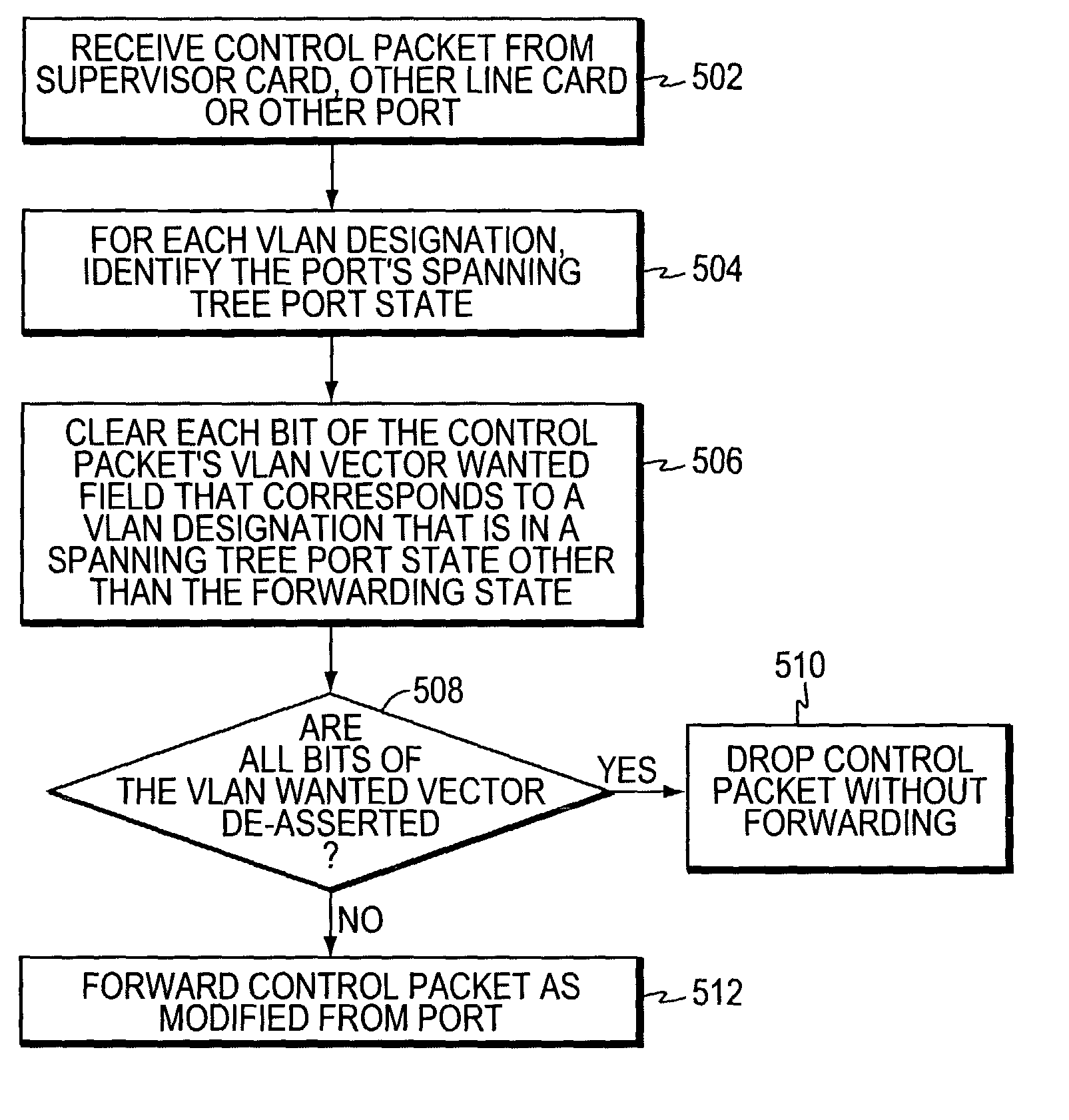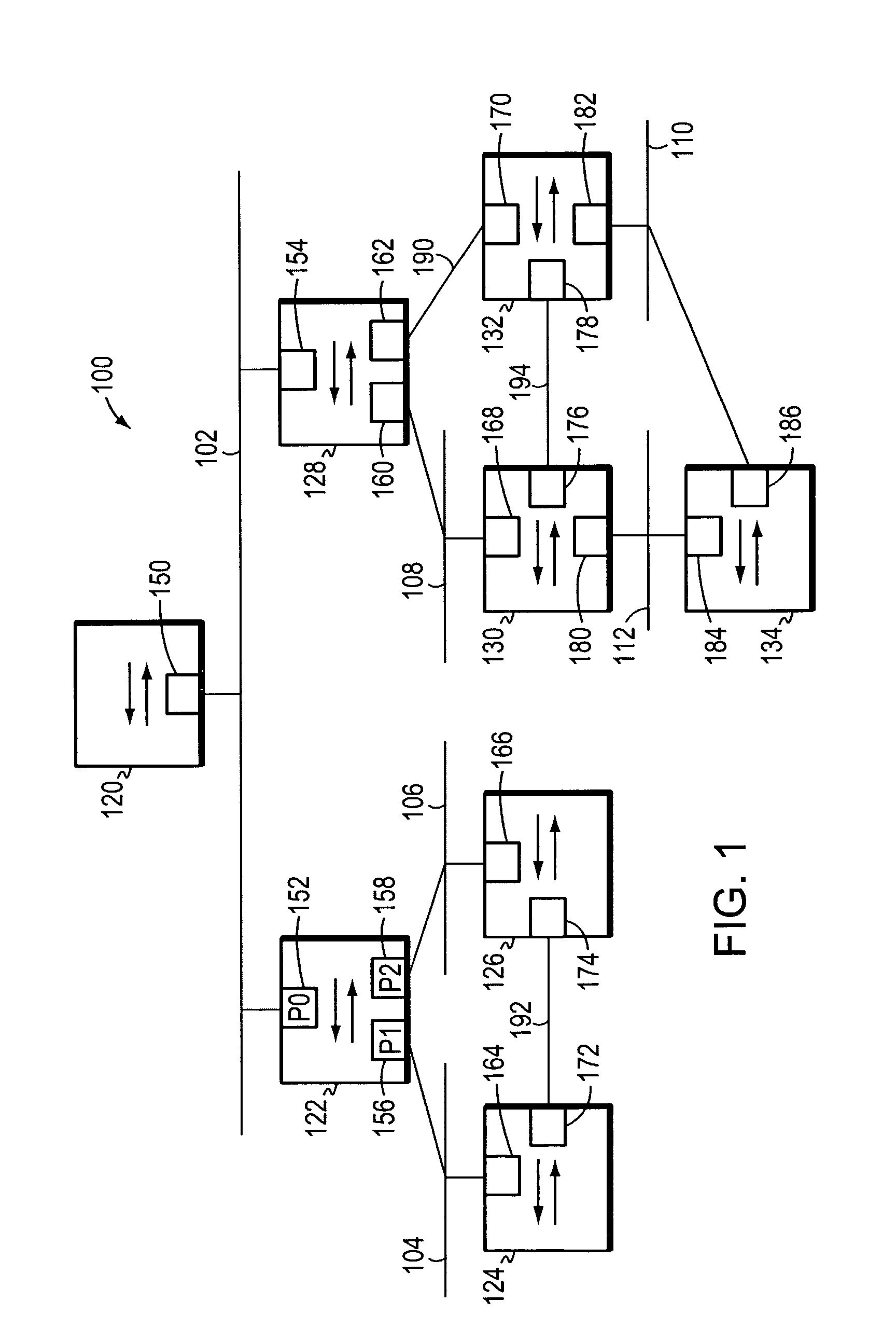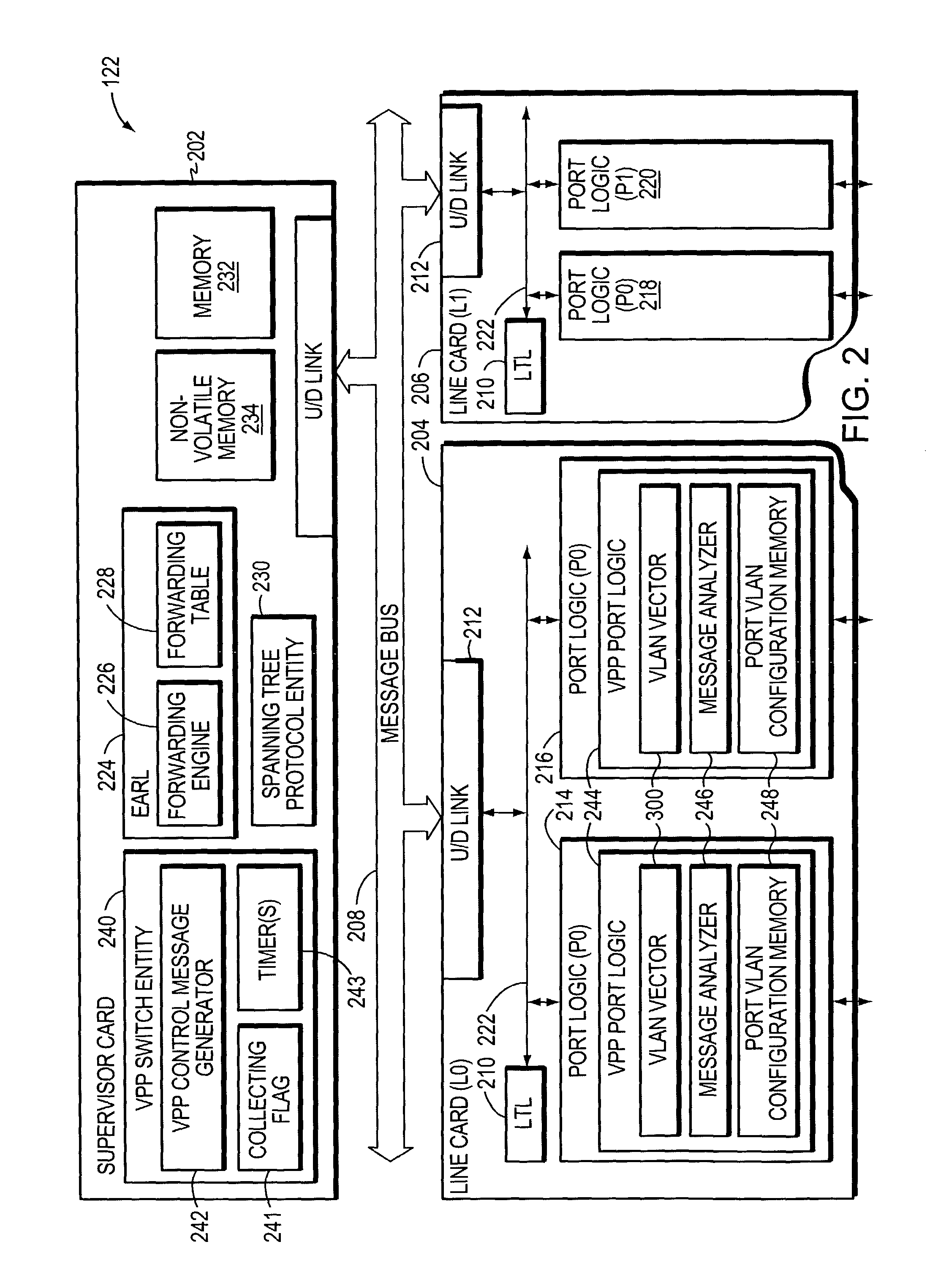Virtual local area network pruning protocol
- Summary
- Abstract
- Description
- Claims
- Application Information
AI Technical Summary
Benefits of technology
Problems solved by technology
Method used
Image
Examples
Embodiment Construction
[0030]FIG. 1 is a highly schematic block diagram of a computer network 100 comprising a plurality of local area networks (LANs) 102-112 that are interconnected by a plurality of intermediate devices, such as bridges or switches 120-134. More specifically, each switch 120-134 has a plurality of ports, such as ports 150-186, and each LAN 102-112 is preferably coupled to at least one switch port 150-186. Coupled to each LAN 102-112 may be one or more end stations (not shown), such as personal computers, workstations, servers, etc. The switches 120-134 may alternatively or additionally be interconnected by one or more point-to-point links, such as point-to-point links 190-194.
[0031]It should be understood that the network 100 of FIG. 1 is meant for illustrative purposes only and that the present invention will operate with other networks having possibly far more complex topologies. For example, among other changes, one or more end stations may be directly coupled to the intermediate dev...
PUM
 Login to View More
Login to View More Abstract
Description
Claims
Application Information
 Login to View More
Login to View More - R&D
- Intellectual Property
- Life Sciences
- Materials
- Tech Scout
- Unparalleled Data Quality
- Higher Quality Content
- 60% Fewer Hallucinations
Browse by: Latest US Patents, China's latest patents, Technical Efficacy Thesaurus, Application Domain, Technology Topic, Popular Technical Reports.
© 2025 PatSnap. All rights reserved.Legal|Privacy policy|Modern Slavery Act Transparency Statement|Sitemap|About US| Contact US: help@patsnap.com



